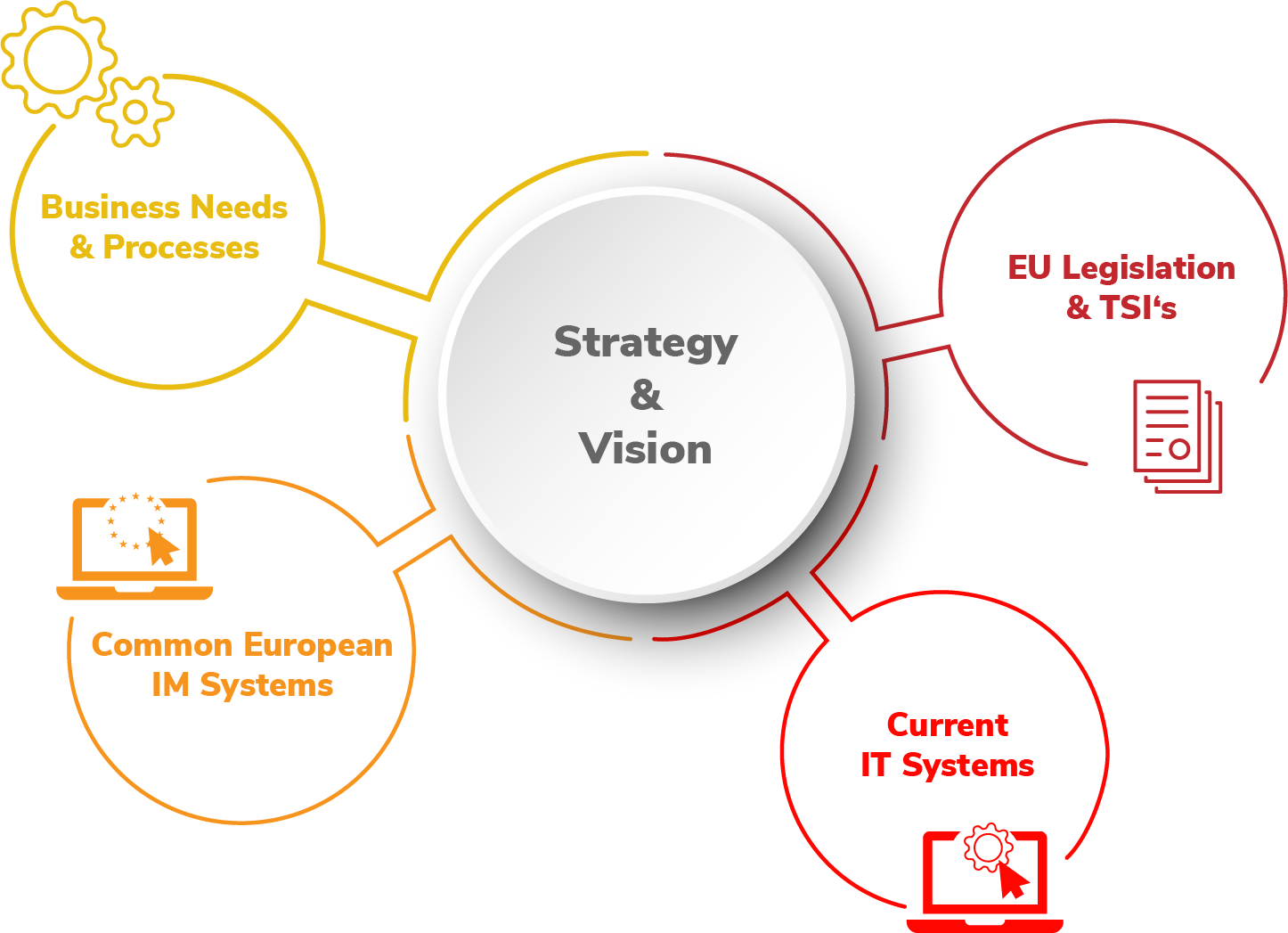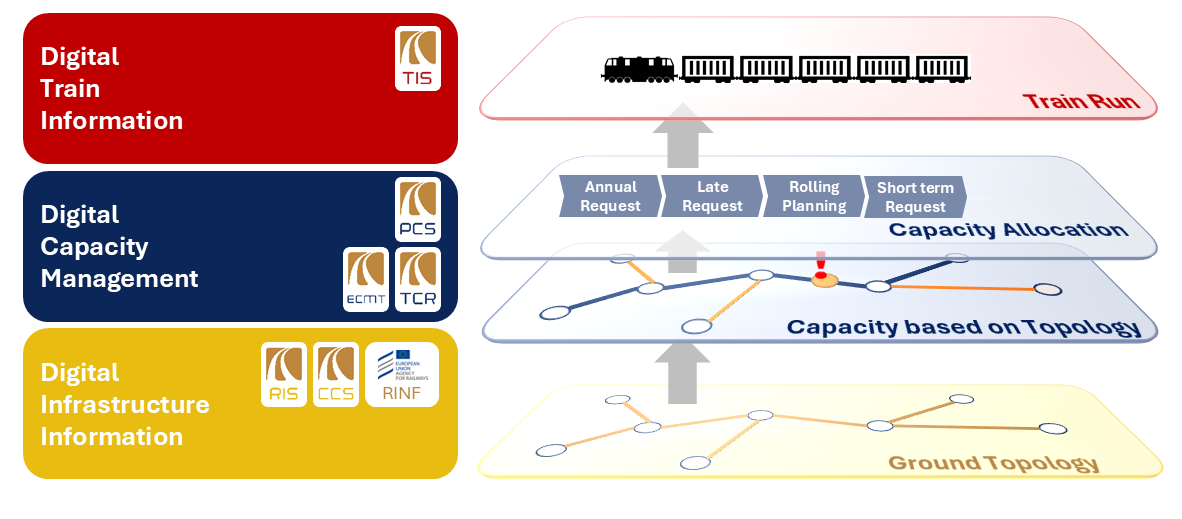RNE’s IT strategy has been developed over several years in close collaboration with the IT managers of RNE’s Members. While its main pillars have existed since the beginning, new challenges, such as the Rail Freight Regulation, are being taken into account as they arise. The facilitation of use, development and implementation of software tools according to changing business demands is a major part of RNE’s IT strategy, which is based on the four pillars illustrated in the graphic below.

IT being a support service, major needs are defined in the business areas concerned. It is RNE IT’s task to ensure that the required functions are in place and that they are available in line with the agreed service levels (SLAs – service level agreements). It goes without saying that this must be done in a harmonised and cost-efficient way. Moreover, RNE systems must be connected with the IM’s company systems to be able to act as a common European IM system. Therefore, RNE has started the Big Data project to enable the exchange of harmonised reference files between IM and RNE systems. By using that approach it shall be possible to use several functions provided by one system in other systems as well.
Based upon the work of the PRIME digital subgroup from 2021 and 2022, three main digitalisation domains, which IMs are working on, were defined:
- Digital Infrastructure Information
- Digital Capacity Management (digital part of Timetable Redesign (TTR))
- Digital Train Information
